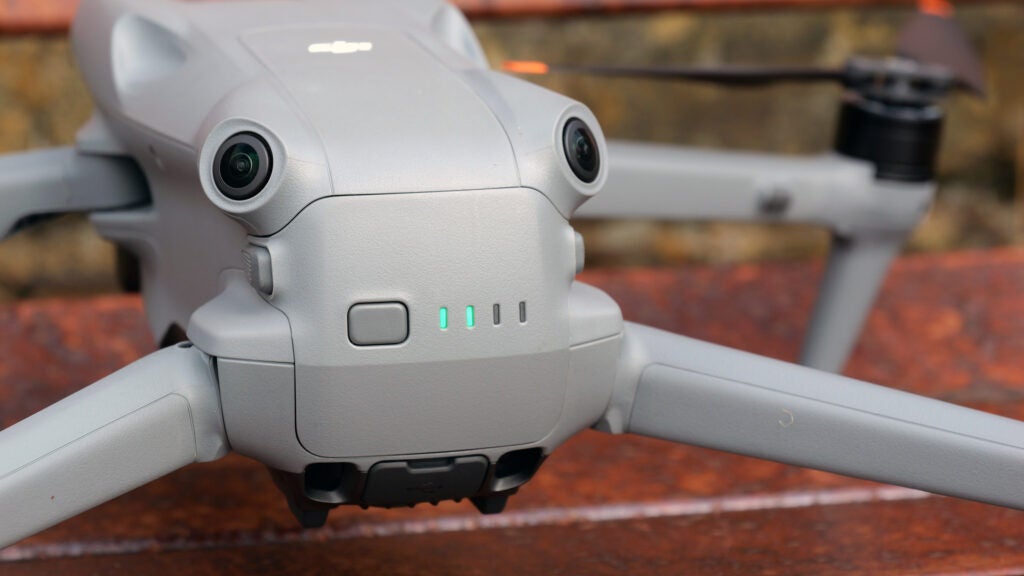
If you’re looking to shoot aerial photography or video, you’ll want to get your hands on a drone. These nifty little robots are able to easily take flight, allowing you to capture angles that would otherwise be impossible (or at least very difficult if you don’t have the right equipment on hand).
Whether you’re picking up your first drone or upgrading from an older model, this guide is designed to help you decide on your next big purchase. We’ve tested a good number of drones from small and budget models to larger, more premium options and included only the best-of-the-best in this list.
When we test drones, we consider factors like the design, build quality, flight performance, camera performance and battery life to ensure we form a well-rounded opinion of each device. We also examine additional features such as flight modes, companion apps and speed as these can make or break your flying experience.
We would recommend doing a bit of research into UK drone law before you place any drone order as you don’t want to run into any legal issues for flying yours in the wrong place. This is especially important to do first as the size and weight of your drone will affect how these laws apply to you.
Sub-250g drones are the easiest to fly legally, for example, with relatively lax restrictions compared to heavier drones.
Keep reading to discover all the best drones we’ve tested in recent years, or visit our other best lists for more great devices for photography and videography. These include the best cameras, best mirrorless cameras, best action cameras and the best cameras for vlogging.
Best drones at a glance
How we test
We thoroughly test camera drones with hours of flight time, as well as capturing sample photos and videos. We’ll always tell you what we find and we never, ever accept money to review a product.
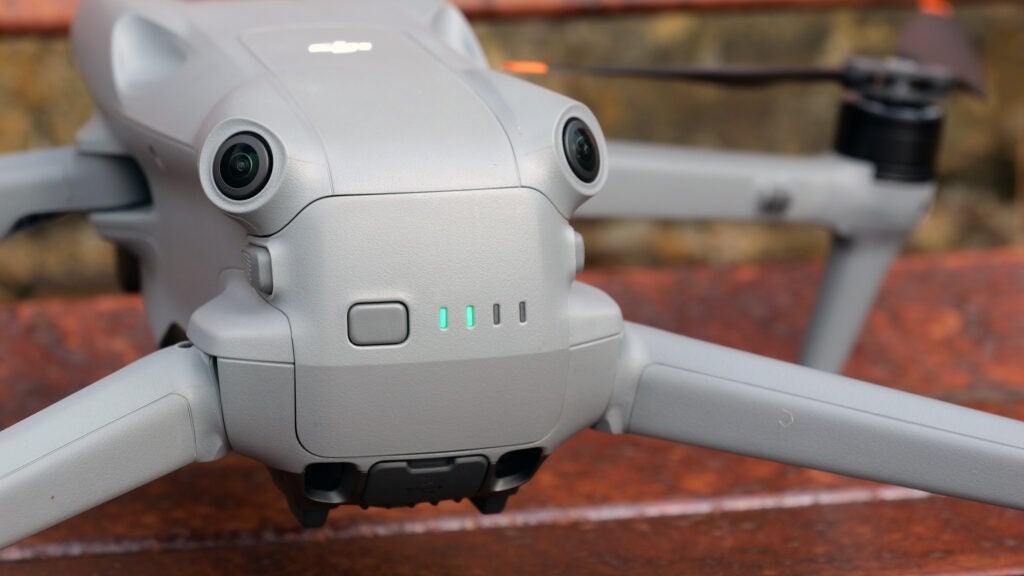
Pros
- Superb image quality from a versatile double camera
- Long battery life
- User-friendly flight controls and safety features
- Smaller and cheaper than a Mavic Classic
Cons
- Significantly larger and heavier than the Air 2S
- Weight class limits where it can be flown in the UK
The DJI Air 3 is DJI’s latest mid-range folding drone aimed at enthusiasts who want great aerial image quality without the Mavic price tag. It’s also the first new Air drone since 2021’s Air 2S.
The DJI Air 3 features a 48-megapixel dual-camera setup consisting of a wide-angle sensor and a telephoto sensor. This is the first time an Air camera has come equipped with two cameras and we enjoyed both of them, with the telephoto lens allowing you to get closer to your subject without disturbing that, whether you’re shooting sports, wildlife or a wedding.
We also found that the image quality and flexibility surpassed all previous mid-range and entry-level drones from DJI without costing as much as the Mavic 3 series.
There are loads of useful features here too, including FocusTrack to lock onto a subject and omnidirectional obstacle avoidance to prevent the drone from bumping into things.
The drone also packs a larger battery than the Air 2S, allowing you to record up to 46 minutes of footage before landing to recharge.
The biggest drawback here is the design. The DJI Air 3 is almost as heavy as the Mavic 3 Classic and much larger and heavier than the Mini 3 Pro.
For EU flyers, the weight won’t make a difference as this drone is classified as a C1 drone. However, UK buyers will want to consider the fact the Air 3 is subject to more restrictions than the Mini 3 Pro due to its weight being over 250g. This means the Air 3 legally cannot fly closer than 50m to uninvolved people or over a crowd and must remain at least 150m away from residential, recreational, commercial and industrial sites.
For this reason, UK buyers might want to consider the more compact and lightweight Mini 3 Pro over the Air 3.
Reviewer: Sam Kieldsen
Full Review: DJI Air 3

DJI Mini 4 Pro
Best alternative
Pros
- 249g weight circumvents most drone restrictions
- Omnidirectional vision sensors
- Excellent image quality
Cons
- Not cheap by small drone standards
- Average low light image quality
The DJI Mini 4 Pro is the best of DJI’s sub-250g Mini series, making it our recommended choice for hobbyists and professionals looking to fly their drone in the UK with the fewest restrictions possible.
The DJI Mini 4 Pro costs slightly more than its predecessor, the DJI Mini 3 Pro, but with this new price comes some small but significant upgrades. The drone is also a fraction of the price of the flagship Mavic 3 Pro.
The DJI Mini 4 Pro is a small, lightweight drone that collapses down tiny enough to fit in a large coat pocket.
The simple twin-stick control setup is responsive and allows for precise movements. The Mini 4 Pro can travel as fast as 16m/s in S mode and the four motors are strong enough to ensure the drone remains steady in winds of up to 10.7m/s.
Key features include obstacle avoidance via vision sensors, with the Mini 4 Pro covering more angles and directions than the Mini 3 Pro. We found that the sensors work well but it’s worth noting they aren’t as effective in low-light conditions. The Mini 4 Pro also includes an improved version of DJI’s ActiveTrack subject tracking, along with ActiveTrack 360 to circle your subject while moving up and back or forward without crashing.
Inside the drone is a gimbal-stabilised 12-megapixel, 1/1.3-inch CMOS sensor with support for 4K video at up to 60fps, or slow-motion 4K at up to 100fps. There’s also 1080p/200fps for those looking to increase the frame rate even further. The new imaging processor supports 10-bit colour up from 8-bit through the D-Log M profile for a wider colour gamut and greater dynamic range.
Stills can be captured at 12-megapixels or 48-megapixels thanks to the Quad Bayer sensor, but low light performance can be hit and miss – especially when compared to results from the larger sensors in DJI’s Mavic drones.
When it comes to battery life, the Mini 4 Pro delivers the same 34 minutes of flight time as the Mini 3 Pro.
Reviewer: Sam Kieldsen
Full Review: DJI Mini 4 Pro
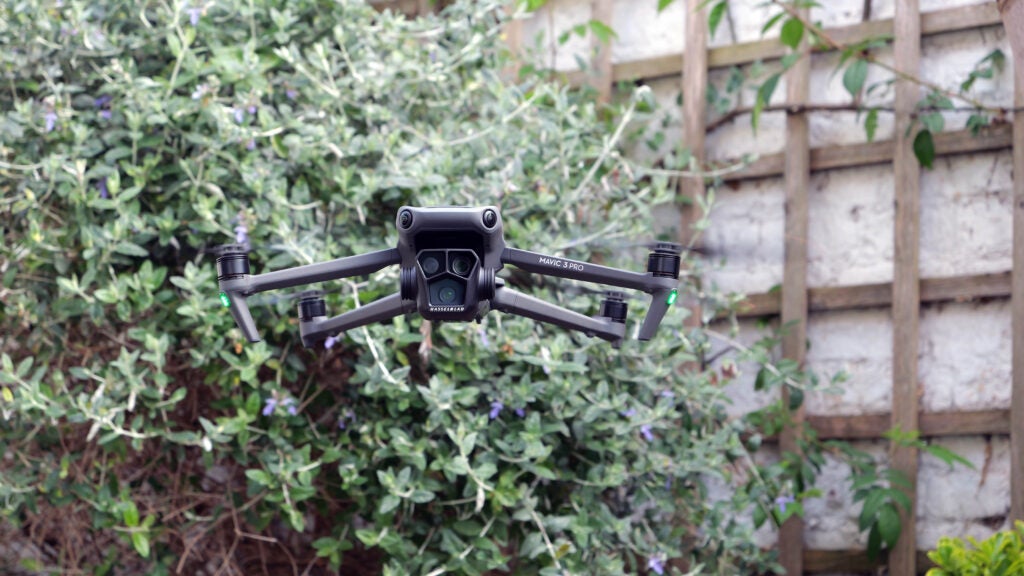
DJI Mavic 3 Pro
Best premium pick
Pros
- New 3x camera in addition to wide angle and 7x
- Long battery life
- Easy to fly
- Great range of safety features
Cons
- Seemingly too heavy to fly in the A1 category
The DJI Mavic 3 Pro is the second five-star review on this list and our top choice for anyone looking for a premium drone with a superb camera, long battery life and a great range of safety features.
The Mavic 3 Pro is a 958g drone with a design that is virtually identical to DJI’s previous Mavic 3 models. The quadcopter is built from hard-wearing dark grey plastic and folds down to a compact size.
The drone is easy to use and compatible with the RC or RC Pro controllers, both of which are well-built, have long battery lives and connect to the drone wirelessly and quickly. The twin-stick controls are simple and responsive and the drone feels agile and zippy with Sport, Normal and Cinema modes.
The Mavic 3 Pro supports omnidirectional object detection and APAs 5.0, meaning it can dodge obstacles automatically while tracking a moving subject so long as you aren’t using Sport mode.
Video transmission is excellent, delivering a low-latency feed of up to 1080p from the camera to the controller display at an up to 15km distance (a length you wouldn’t even reach without breaking a few drone laws).
The main Hasselblad camera delivers sharp 20-megapixel stills and can record 5.1K video at up to 200fps. The camera can also shoot in 10-bit 4:2:2 colour and supports a variety of flat profiles, including D-Log, D-Log M and HLG for easier colour grading.
Like the Mavic 3, the Mavic 3 Pro also features a second telephoto camera. The 12-megapixel camera has a wider aperture than that on the Mavic 3, making it a bit better in low-light situations but video is limited to 4K/60p with no support for any of the aforementioned flat colour profiles.
Finally, there’s a third camera with a telephoto lens equivalent to around 70mm for snapping images of a subject with a compressed viewpoint and layered background without coming too close.
The drone has a flight time of 43 minutes – slightly less than the 46 minutes offered by the Mavic 3 – but this is still a long time to be in the air.
The Mavic 3 Pro is the largest drone on this list with its 958g weight pushing it into a stricter category in the UK when it comes to flying restrictions. If you’re looking for more shooting freedom, you might want to opt for a drone under 250g like the DJI Mini 4 Pro.
Reviewer: Sam Kieldsen
Full Review: DJI Mavic 3 Pro
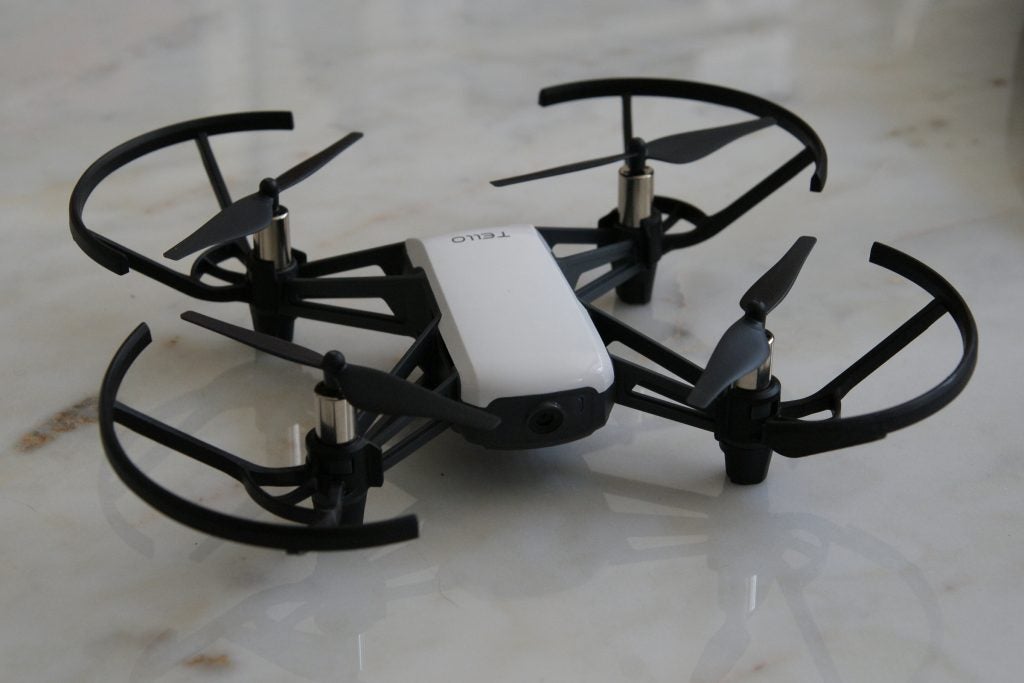
Ryze Tello
Best budget drone
Pros
- Very affordable
- Easy to fly
- Compact and lightweight
- Some interesting flight modes
- Simple app
Cons
- Choppy video
- Doesn’t fly well in wind
The Ryze Tello is a tiny entry-level quadcopter created by Chinese startup Ryze Technology in collaboration with DJI. This isn’t a drone for serious aerial photographers but for under £100 the Tello is a joy to fly.
The Tello is small and lightweight even compared to the compact DJI Spark at just 100mm square (when viewed from above) and 80g. The plastic feels noticeably cheaper than that used to make DJI’s usual drones but is still tough enough to provide some durability.
The front camera is fixed instead of mounted on a gimbal, meaning its stabilisation is provided by electronics rather than there. The battery life is also short at just 13 minutes (or 10 in our experience) and can be charged using the Micro-USB port on the drone, or using a separate charger with space for three batteries if you opt for the Boost Combo package.
The drone itself is surprisingly stable and responsive when in flight, though we wouldn’t recommend taking it outside if there’s any wind as the drone runs the risk of getting swept away with no GPS-based return-to-home function.
There are six flight modes to experiment with, including 360, Throw & Go, 8D Flips, Bounce, Up & Away and Circle, all of which we found worked exactly as advertised.
There’s no card slot or built-in ROM storage, with photos and video transferred directly to the smartphone or tablet used to control the drone. You can also use a third-party Bluetooth gamepad controller to direct the Tello if you’d prefer a pair of physical joysticks.
The Tello requires a Wi-Fi connection, meaning it can only stretch as far as 100m from its user, though we found it was limited to closer to 50m.
The Ryze Tello produces acceptable-looking 5-megapixel stills and 720p video in bright lighting with little noise and level footage thanks to EIS, though the quality is nothing outstanding. This is also affected by the fact that footage is transferred over Wi-Fi, meaning we often spotted dropped frames and bad compression artefacts in videos shot outside.
The Ryze Tello is a well-made toy that is fun to fly and teaches you the drone fundamentals with a good range of interesting flight modes. However, anyone looking to capture decent-quality photos and video will need to spend more on their drone purchase.
Reviewer: Sam Kieldsen
Full Review: Ryze Tello
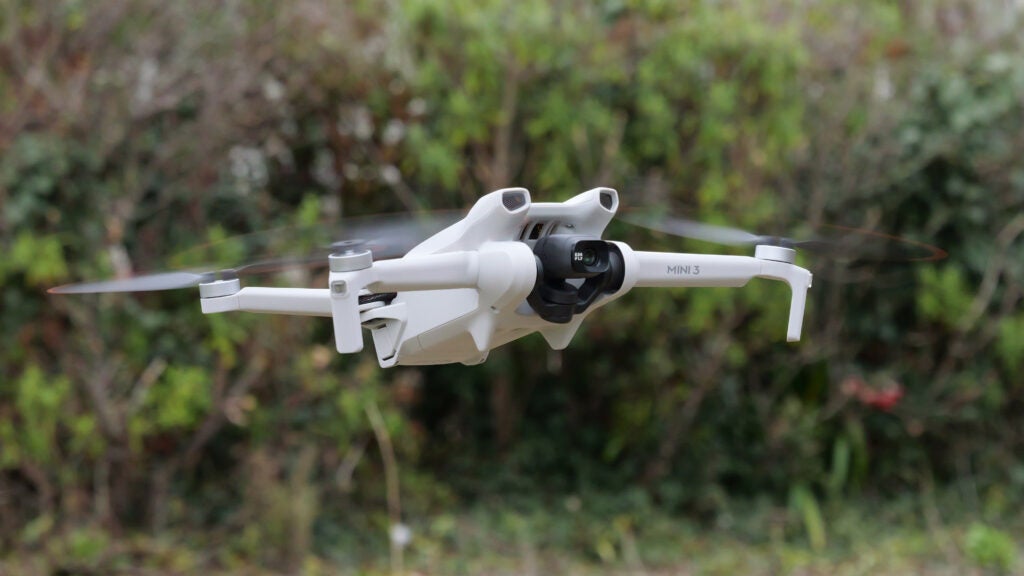
DJI Mini 3
Best small drone
Pros
- Great value as an entry-level drone
- Stunning overall video and image quality
- Lightweight and portable design
Cons
- Can’t quite match the DJI Mini 3 Pro for preformance
- Photos lose quality when cropping
- No Active Track
The DJI Mini 3 is another small drone, sitting just below the Mini 3 Pro in DJI’s Mini 3 line-up. While not as well-equipped as our favourite drone, the Mini 3 remains an excellent entry-level option that delivers a lot for its low price.
The Mini 3 looks very similar to the Mini 3 Pro and weighs the same 249g thanks to its thin plastic construction. At 148 x 90 x 62mm, the drone is small enough to slip into a coat pocket and the low weight means it falls under a less restricted category of UK drone law than larger drones like the DJI Mavic 3.
There’s a USB-C port for charging and file transfers as well as a microSD slot for storage, and the drone is compatible with the same choice of two controllers supported by the Mini 3 Pro.
Unlike the Mini 3 Pro, the Mini 3 doesn’t benefit from front and back sensors to help detect and avoid obstacles around it and avoid collisions. Instead, the Mini 3 sticks to downward-facing sensors which only aid stability and landing so you’ll need to be a little more careful when flying this drone.
The drone itself is very responsive and easy to fly with no discernable delay between the twin joystick controllers and the drone’s reactions and 720p live feeds are clear and stable. The device has a maximum control range of 6km.
The Mini 3 is capable of hitting speeds of up to 16m/s in windless conditions and we found the drone did a decent job of withstanding coastal wind despite its tiny size. Furthermore, the battery life is even longer than that on the Mini 3 Pro at 38 minutes to the Pro’s 34 minutes.
There are also features like automatic take-off, landing and return-to-home available here, along with some automated shot modes. However, unlike the Mini 3 Pro and the DJI Mavic 3, there’s no Active Track tracking so you will need an actual person to control the drone if you want the camera to follow you around.
The 12-megapixel 1/1.3-inch CMOS sensor is a downgrade compared to the Mini 3 Pro’s camera, but the ability to snap 12-megapixel stills and shoot 4K/30fps video is still impressive for an entry-level drone.
Reviewer: Sam Kieldsen
Full Review: DJI Mini 3
FAQs
According to the CAA, “you do not need to register if you’ll only use a drone or model aircraft that weighs below 250g and is a toy or does not have a camera”.
However, all other drones will need to be registered and the owner must register for either a flyer or operator ID, depending on if they plan to fly it or are just responsible for managing and maintaining the drone.
You can find all of the rules you’re required to follow as someone with a drone in the UK on the CAA’s website.
UK RRP
USA RRP
EU RRP
Manufacturer
Video Recording
IP rating
Battery
Size (Dimensions)
Weight
ASIN
Release Date
First Reviewed Date
Sensor Type
Lens
Zoom
Burst shooting (mechanical shutter)
Burst shooting (electronic shutter)
Screen
Image stabilisation
Wi-Fi
Bluetooth
Number of Memory card slots
USB charging






